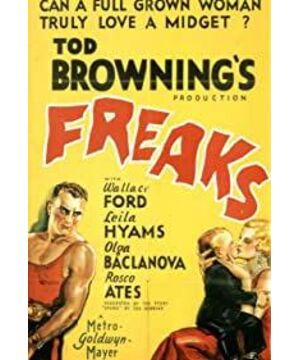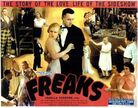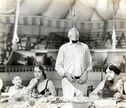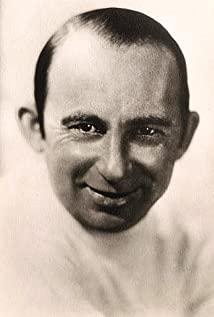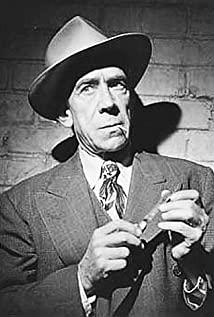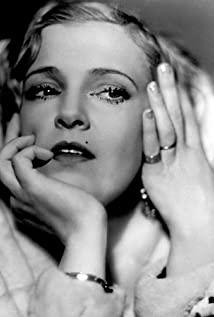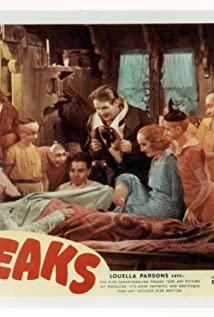original:
Directed by Todd Browning, the 1932 film "Freaks" (Freaks) was adapted from the 1923 Munsey magazine novel "Spurs". Persuaded by Todd Browning, MGM purchased the copyright to this story in the mid-1920s.
In the original story published, in a small traveling circus in France, a dwarf Jacques, who has recently inherited a large inheritance, married Jeanne Marie, a jockey-in-law fishing jockey-in-law. Marie actually liked her partner Simon, and planned to marry him after the death of Jacques, whom she thought was short-lived. At the wedding banquet of the couple, Marie was drunk and insulted her new husband, declaring that she could carry her "little orangutan" on her shoulders and take it from one side to the other in France. A year later, Jacques retired and took Marie to live in his manor. One night, Simon found Marie at the door of his house. She begged Simon to protect her, and Jacques was forcing her to honor her cruel mockery, carrying him on her shoulders for a distance equal to the width of France. Suddenly, Jacques appeared riding a wolfhound, waving a sword in his hand. Simon tried to protect Marie, but was soon overpowered by the dog and killed by Jacques. Marie reluctantly carried Jacques on his shoulders and continued their journey. (Link to the original work: http://www.olgabaclanova.com/spurs.htm )
The final script retains almost no original material, except for the marriage and wedding reception of a wealthy dwarf and a normal figure actor (in this case, a trapeze). In the rewritten final film script, the editors of the film studio emphasized the violence of these "freaks" by changing the beginning of the script and the plot setting of the collective revenge from the freaks at the end, while ensuring that they were cut off. All the direct descriptions of it have been complied with, thereby further increasing the shocking power of the film while complying with the censorship rules at the time.
Time backgroud:
At the end of the 19th century and the beginning of the 20th century, circus and carnival vaudeville performances gave the disabled a little honor and fame. In the heyday of the monster show, wealthy citizens often collected photos and postcards of celebrities, including famous carnival "freaks" such as the Siamese twins.
However, as carnivals and vaudeville shows lost their appeal, the status of this celebrity has also changed.
In the early 20th century, with the development of science, the United States entered a new era. The popularization of eugenics theory has contributed to people's fear that deformed humans will inherit violent or depraved tendencies and lead to the institutionalization of many Americans who lack normal characteristics. By the end of the 1920s, the theoretical basis of isolating heterogeneous bodies made travel catwalk shows that promoted the origin of heterogeneous aliens lose their credibility and appeal. Only in more traditional and backward areas, where hospitals and asylums are not yet popular, still welcome vaudeville, circuses, and grotesque carnivals.
When "Freak Man" was released, it was exactly this kind of status quo: Variety shows such as freak shows have been linked with "backward" and "hillies". The circus series of films are becoming obsolete and are not favored by urban studio audiences who consider films to be "complex" entertainment. The popularity of freak shows has gradually declined, and audiences no longer regard freaks as exotic celebrities, but have become a pathological and scientific sample.
Without knowing it, MGM incorrectly estimated the social construction of disability in the early 20th century. Although it advertises it as a horror movie, audiences will think it is an ordinary alien movie. With the development of science, the United States has entered an era in which real disabled people are no longer accepted, because this is an insult to the moral order of the body and the healing power of science and medicine. The public began to reprimand, instead of admiring the display of humans with different manifestations of disabilities. The way MGM defines freaks in advertising and publicity further undermines profit opportunities. In order to create a gimmick, the advertising slogans used to promote the film at the time ("Can a dwarf marry an adult woman?", "How do Siamese twins have sex?") may have caused more dissatisfaction with the censorship than the film itself. Therefore, the "Freak Man" at that time was not only interpreted as full of disgusting images, but also as an exploitation of the poor.
In addition, the producer incorrectly predicted the difference between the "shock" and "stimulus" of profit and the "disgust" and "fear" of losing money. At that time, American culture was not ready to treat people with disabilities from an equal perspective. On the contrary, the actual physical differences of the actors caused disgust and disgust. The romantic theme of "sex" between a short man and an ordinary woman makes the audience uncomfortable, rather than teasing them. Although the producers at the time believed that sexy clips would attract the audience, they did not understand that the audience did not think that the juggling "freaks" were complete human beings, and they would be troubled by the romantic "abnormal" in their eyes. The audience participates through dislike rather than empathy.
literature:
https://en.wikipedia.org/wiki/Spurs_(short_story)
Larsen, Robin, and Beth A. Haller. "Public Reception of Real Disability: The Case of Freaks." The Journal of Popular Film and Television , vol. 29, no. 4, 2002, pp. 164-172.
MCROY, JAY, and GUY CRUCIANELLI. "I Panic the World": Benevolent Exploitation in Tod Browning's Freaks and Harmony Korine's Gummo." Journal of Popular Culture , vol. 42, no. 2, 2009, pp. 257-272.
View more about Freaks reviews


